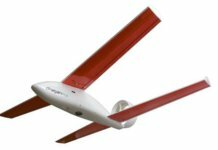The Trump administration is to be commended for the recent announcement of 10
state, local and tribal governments, who, together with their private industry partners,
will participate in the Federal Aviation Administration’s (FAA) new Unmanned Aircraft Systems Integration Pilot Program (IPP).
By creating partnerships among all levels of government, innovative entrepreneurs and global aerospace technology companies, the pilot program becomes an important forum to continue to address many of the pressing regulatory, technological and social requirements to implement a safe, effective and timely framework for sophisticated drone operations.
There are four big challenges to solve in order to responsibly accelerate the evolution of the
drone economy: the pace of establishing the federal regulatory framework, continued
research and development of the requisite technology, defining a new role for state and
local governments, and the development of counter-drone systems to secure our safety
from rogue drone operations. The pilot program is an important first step toward meaningful solutions to the first three challenges.
First, the FAA’s development of the drone regulatory framework – understandably, in my
view – has not kept pace with the speed of the potential commercialization of innovative
drone technology. By design, the federal regulatory apparatus is slow and deliberative, rather than quick and agile. To my mind, a lot more work has to be done across government to streamline and advance the pace of regulatory development in response to emerging technologies.
Nevertheless, the IPP dramatically expands the FAA’s reliance on the private sector to develop technological solutions to important regulatory obstacles and hurdles. In effect, the program invites all of America’s leading entrepreneurs and aviation technologists, who have been busy designing necessary systems, components and standards, to conduct the large number of field tests necessary to produce the data and experiences necessary to rapidly scale sophisticated commercial drone operations, which will serve to better inform the FAA’s future regulatory oversight and monitoring responsibilities.
Surely, private-sector ingenuity that rapidly developed and implemented the sophisticated technology infrastructure of the ”Internet Age” is capable of repeating that fabulous success for the “Drone Age.” The pilot program begins to provide sufficient opportunities to field-test new drone use cases heretofore off limits to the private sector.
Second, the safe integration of drone operations into national airspace requires continuing research and development of a sophisticated technology infrastructure that includes streamlined and automated systems for drone registration, flight authorization, and dynamic routing of drones. Only technology can ensure a drone conducting a package delivery operation can safely navigate the entirety of its route – knowing about the myriad of ever-changing local low-altitude airspace conditions – or allow beyond visual line of sight flights by providing routing services, radar integration and alerts about manned aircraft.
However, while the IPP implicitly affirms that some impressive technology has been waiting in the wings ready to be tested, it is beyond peradventure that other required technology is still being developed in research laboratories. Just to name a few, yet-to-be-developed technologies are traffic management algorithms reflecting real-world uncertain and rapidly changing, rather than fixed and static, operating environments; sensors with greater levels of command-and-control capability, flexibility, versatility and adaptability; significantly longer battery life; or greater on-board computing power to facilitate instantaneous maneuverability of the drone in lieu of relying on data transmissions between the drone and cloud-based servers.
Third, the federal government has exclusive regulatory oversight, monitoring and
enforcement authority for manned aviation and has been tasked with establishing fixed routes and flight patterns for large aircraft to traverse into the upper atmosphere. That model no longer works when the task is to integrate sophisticated drone operations into often low-altitude airspace above every local community and neighborhood in America. To do so requires close collaboration between the FAA and state, local and tribal
governments that have the authority to adjudicate private property, privacy and land-use concerns in local communities and neighborhoods.
The IPP implicitly recognizes the inapplicability of the manned aviation model that gives the federal government the sole and exclusive regulatory, oversight, monitoring and enforcement responsibility. As a result of the pilot program, a strong and diverse coalition of state, local and tribal governments is being given a seat at the table to develop new mechanisms to resolve uniquely local interests.
However, to fully realize the enormous economic promise of the drone industry, the private industry has to come to the table understanding that giving the FAA sole responsibility to craft uniform rules of national applicability is too simplistic a response to the many divergent interests of local communities across America. The IPP truly is the private sector’s first public opportunity to work collaboratively to develop the “new federalism” in which state, local and tribal governments play an important role.
When it comes to the commercialization of drone technology, the U.S. is facing steep competition. We’ve already seen robust public-private programs get off the ground in Japan, New Zealand and Switzerland, to name a few. The pilot program is an important step to strengthen U.S. global leadership in the nascent drone industry and hasten the day when all manners of sophisticated drone operations – including package delivery and other operations beyond visual line of sight, nighttime operations, and operations over people – are safely and routinely integrated into national airspace.
Reggie Govan is the former chief counsel of the FAA under the Obama administration, during which he played key roles in establishing the regulatory framework for the commercial operation of drones and performance-based rulemaking. Before joining the FAA, Govan served as a corporate counsel with responsibility for a range of compliance issues and as counsel to committees in the U.S. House of Representatives and the U.S. Senate. Govan is also a seasoned litigator. He is currently a member of the advisory board of AirMap, an airspace management platform for drones, and Vorpal, a provider of technology to identify, track and mitigate rogue drones.








